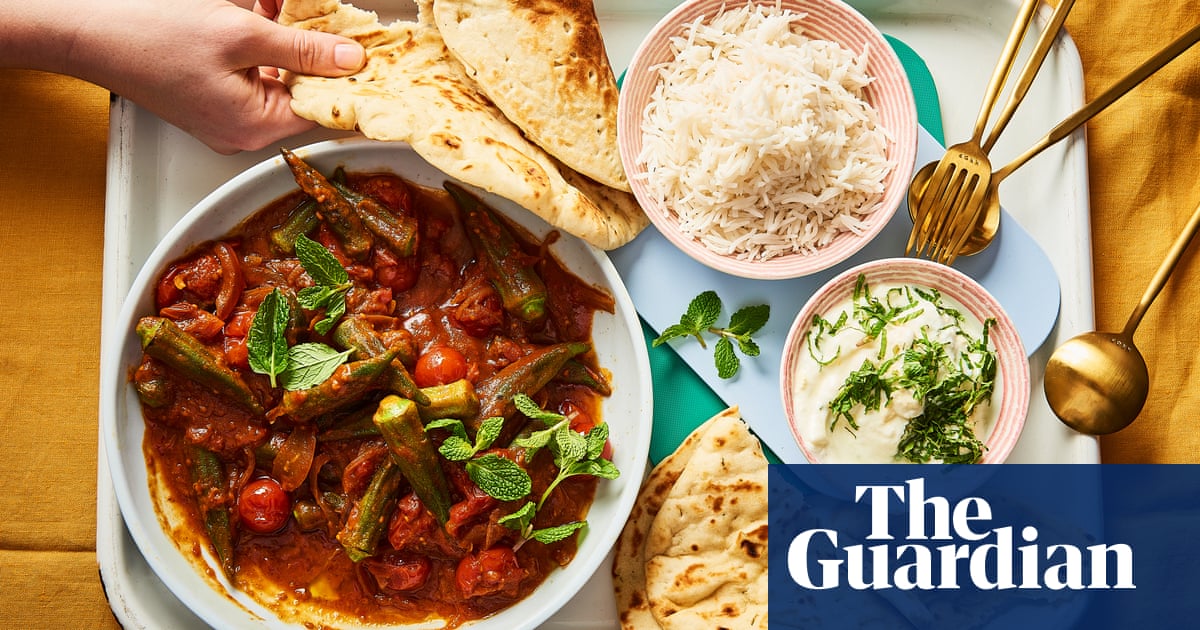
The visceral response some people have to the merest mention of okra speaks to the way its unique textural properties stick in one’s memory – stick being the operative word.
Okra’s characteristic gloop is the product of the vegetable’s naturally occurring mucilage, which is activated by exposing its innards through slicing and through extended cooking (like in a stew). Mind you, its propensity to simmer into slime over time is part of the appeal in certain dishes like gumbo from America’s south and west African okra stew, where it acts as a thickener for the sauce.
But if you prefer to mitigate the mucilage, it’s easier than you think. Choose smaller okra and trim only the top of the stem so the pods remain whole. This means the mucilage, which is contained within the body, doesn’t get a chance to go gooey.
And think of okra like a mogwai in the Gremlins films: if you want it to stay cute, don’t get it wet. Instead of washing, just pat okra with a damp cloth to remove dirt.
Fat forms an effective waterproof barrier, which is why frying okra first – a bit like searing meat for a casserole or curry – is a great way to build flavour and stop slime. There’s no need to be too prescriptive on how long to fry them as okra can actually be eaten entirely raw. Finely slice, salt and team with bonito for a Japanese okra salad, blanch whole and combine with a Cantonese soy-sauce-based gravy or with a zippy red wine vinaigrette for Brazilian salada de quiabo.
Acid also helps, which is why you’ll often find okra teamed with lemon juice, vinegar or a tomato-based sauce, like in my recipe below.
For me, okra is special because when you bite into it, the slippery texture is a lot like a gelatinous slow-cooked cut of meat. This makes it perfect for battering and deep-frying (so juicy!) and for vegetarian and vegan curries like this one, which is a very midweek take on a north Indian bhindi masala.
Autopilot okra curry
I’ve intentionally kept the spicing as simple as possible – a tablespoon each of your favourite garam masala and Indian-style curry powder. If you’d prefer to make up your own mix, go right ahead.
I’ve chosen tinned cherry tomatoes because I like the way they bob about in the sauce, but other tinned tomatoes (whole peeled or chopped) are just fine. If you have fresh tomatoes waiting to be used, feel free to use these instead – four to five medium tomatoes (around 750g), roughly chopped, will take an extra 10 minutes or so simmering.
In Australia, okra is still at its best for another couple of months. But this autopilot tomato gravy can be used year-round for all manner of veg, from green beans to blanched cauliflower or broccoli.
Serves 4
3 tbsp neutral oil (I like grapeseed)
450g small okra, wiped clean and tops trimmed
1 large red onion, finely sliced
1 tbsp garam masala
1 tbsp mild Madras curry powder
⅛ tsp chilli powder (or go heavier if you dare)
1 thumb’s worth of ginger, grated
3-4 garlic cloves, minced
2 tins cherry tomatoes (800g total)
½ tsp sugar (optional, but it will make any tomato-based sauce sing)
1 tsp salt
Steamed basmati rice and naan, to serve
Minted yoghurt
150g natural yoghurt
2 tbsp fresh mint leaves, finely sliced, plus small mint leaves for garnish
Heat a large heavy-bottomed pan over medium heat. Add two tablespoons of the oil and wait for it to shimmer, then fry the okra until golden brown. Transfer to a bowl and reserve.
Pour the remaining oil in the pan, add the sliced onion and wait for it to sizzle. Lower the heat, cover and sweat for six to eight minutes until the onions are soft and glistening.
Add the garam masala, curry powder, chilli powder, ginger and garlic to the pan, stir and simmer for one to two minutes until unavoidably aromatic.
Add the tomatoes (pour a splash of water into the near-empty tins to slosh out the remaining tinned juices into the pan), sugar (if using) and salt, and simmer vigorously for eight to 10 minutes, uncovered. Stir occasionally and allow the sauce to thicken and reduce.
Meanwhile, to make the mint yoghurt, stir the sliced mint through the yoghurt and set aside.
When the sauce is reduced by half, taste for seasoning. Tumble in the reserved okra and simmer for two to three minutes to reheat the okra and introduce it to its new saucy home. Serve with rice, naan and minted yoghurt.












